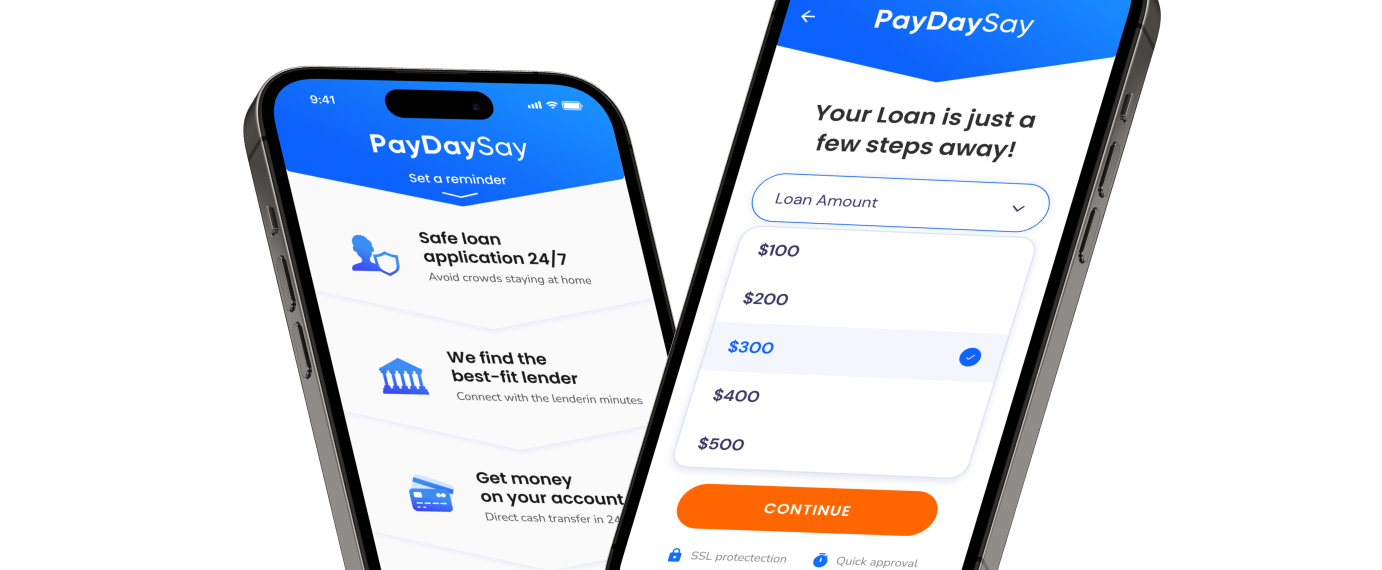Taking out a loan can be an intimidating process, but it doesn’t have to be. Having the right information and understanding the process can make it a lot less scary.
In this article, we will discuss 9 easy steps to help you take a loan. From figuring out how much you need to borrow to understanding the repayment schedule, we’ll cover it all.
Knowing what to expect and understanding the process can help you make an informed decision and make the process smoother. Whether you’re looking to finance a car, a home, or a business, we’ll help you take a loan the right way.
1. Decide How Much You Need
Before you even begin the financing process, you should do some research to determine how much money you will need to take a loan. You don’t want to take out too much and find yourself overextended or too little and not able to cover your expenses.
Think about your current expenses and income, as well as any future expenses you may have. You should also review any existing debt you have, like credit cards or student loans, and make sure that you won’t be taking out more than you can comfortably afford. And make sure you factor in things like fees, taxes, and other associated costs.
Make sure you are realistic when calculating the amount you can pay back each month. Consider your other financial obligations and be sure to factor in any unexpected expenses that could come up.
2. Know Your Credit Score
Lenders use your credit score to determine your creditworthiness, so it’s important to have an accurate and up-to-date credit report. To get this information, you can request a free copy of your credit report from one of the major credit bureaus (Equifax, Experian, or TransUnion).
This report will include your credit score and other details about your credit history. You can also get a credit score from some online services, though these services may charge a fee. Either way, it’s important to review your credit report and make sure everything is accurate.
Knowing your credit score and understanding your credit history will help you make better decisions when it comes to taking a loan. It’s also wise to take steps to improve your credit score, such as paying your bills on time and keeping your credit card balances low.
3. Decide On The Loan Type
When deciding on the type that is best for you, it is significant to consider your circumstances and your ability to repay it. Doing the research to understand the different types and their associated risks and benefits can help you make the right decision for your needs.
It is possible to take a loan in a variety of ways. Here we have the different types of loans available, each with its own set of advantages and disadvantages.
Personal Loans
A personal loan is taken out by an individual for a specific purpose. It can be used for anything from home improvements to medical bills and is typically repaid in monthly installments. They are one of the most popular ways to take a loan and can be obtained from a bank, credit union, or online lender.
To take a loan, you’ll need to provide information such as your income, employment history, and credit score. The lender will then use this information to determine if you are eligible and the terms and conditions of the financing.
They typically come with lower interest rates than most other types of credit, making them a great option for anyone looking to finance a large purchase. However, they usually require a good credit score in order to take a loan.

Auto Loans
Auto loans are used for the financing of new and used vehicles, either from a dealership or from a private seller. They are typically secured, meaning they are backed by the vehicle itself and the lender can repossess the vehicle if the borrower defaults on their payments.
They are available from banks, credit unions, online lenders, and even car dealerships. Depending on the lender and the borrower’s credit, the typical terms are for a period of two to eight years, with an interest rate of 2.40% and 20.99%.
They can also be used when paying for associated taxes, title, and registration fees. The borrower can purchase the car outright or make monthly payments towards the purchase price. Auto loans are an important financial tool for many people and can offer the opportunity to take loans to purchase a car without having to pay the full amount upfront.
Student Loans
Student loans are used to help cover the cost of post-secondary education. They are typically provided by banks to cover books, tuition fees, and other college expenses.
They differ from other types of borrowing in that they typically offer lower interest rates and more flexible repayment terms. To take a loan, you will need to provide proof of your current enrollment in school. You will also need to show proof of your ability to repay the money, such as a job, student funding, or a co-signer.
Once approved, you may take loans in the form of a lump sum or in monthly installments. Banks may also offer student loan consolidation and refinancing options, which can help you manage your debt and make repayment easier.
Mortgage Loans
The purpose of mortgage loans is to allow borrowers to take a loan to buy a house. The debt is secured by the home itself, meaning that the lender can take back the property in case of default.
Mortgages are typically long-term, with most lasting between 25 and 35 years. During this time, the borrower is required to make monthly payments that cover both the principal amount (the amount borrowed) and the interest (the cost of borrowing the money). The interest rate is either fixed, meaning that it does not change over time, or variable meaning it can change.
These types of loans are typically used to purchase a new home, but they can also be used to finance home improvements, refinance an existing mortgage, or even purchase an investment property.

Home Equity Loans
Home equity loans allow homeowners to take a loan against the equity they have built up in their homes. This type of financing is typically used to finance home renovations, pay for college tuition, or consolidate other high-interest debts.
To qualify, you must have at least 15% equity in your home. It is important to note, however, that taking out this type of loan will put your home at risk of foreclosure if you are unable to make the payments. Additionally, the interest rates are typically much higher than the rates of other types of borrowing.
This makes it a less attractive option to those who are looking to save money. They are usually only available to those with good credit, as lenders will want to make sure they have a high chance of being paid back. However, they can be a great way to take a loan if you need to make major purchases or pay off high-interest debt.
Credit-Builder Loans
A credit-builder loan is designed to help people take loans with poor or limited credit scores build better credit. It is usually offered by smaller banks and credit unions, and it works by having the borrower put up collateral. The lender then issues a credit line to the borrower, who must make regular payments to build their credit score.
The borrower also pays interest, just like any other debt. The catch is that the loan amount is not given to the borrower but rather held in a secure account by the lender and realized after a certain amount of time.
The borrower’s payments are then used to build their credit score, while the lender earns interest on the money they are holding. Credit-builder loans can be a great tool for those with poor credit who want to take loans and improve their financial standing.
Debt Consolidation Loans
A debt consolidation loan is used to pay off multiple debts. It allows you to combine multiple debts into one single loan with a single payment. This can provide relief from the burden of multiple debt payments and simplify your monthly payments.
It also helps to reduce interest rates and provide more manageable monthly payments. Consolidation loans can be used to pay off credit card debt, medical bills, student loans, and other forms of debt.
You should understand the terms and conditions of the agreement before you take loans like this and make sure that it will actually help you in the long run. If you’re considering a debt consolidation loan, it’s a good idea to talk to a financial advisor to make sure it’s the best option for your situation.
Payday Loans
A payday loan, sometimes referred to as a cash advance, is a short-term option that is designed to help people who need a small amount of money quickly. The money is usually offered as unsecured, and repayment is required on the borrower’s next payday.
Payday loans are often used by people who are facing unexpected expenses and need a quick, short-term solution. They are also used by people who have bad credit and cannot take a loan from a bank or credit union.
This type of borrowing can be a great option for those who want to take loans but don’t have other options, but it is important to understand the risks associated with them. They typically come with very high-interest rates and fees, so it is crucial to make sure you can pay back the money on time.
For those seeking a more convenient way to access funds quickly, using an instant cash loans app can be an effective solution, but it’s essential to carefully consider the terms and conditions.
Small Business Loans
A small business loan is specifically designed for small businesses. It is used to help with the purchase of necessary items, such as equipment, inventory, and real estate. The loan can also be used for working capital, which is money needed to pay bills and other expenses.
This type of financing is typically offered by banks, credit unions, and other financial institutions. They can be secured (meaning you must put up collateral) or unsecured (no collateral is required). The terms depend on the loan amount, the creditworthiness of the borrower, and other factors.
To take a loan, you’ll need to provide the lender with your business plan and financial information, such as tax returns, bank statements, and other financial documents. Once approved, you’ll receive the funds and be expected to pay back the money over a predetermined period of time.

Title Loans
A title loan uses a borrower’s car title as collateral. This means that to take a loan, the borrower is required to put up their car as security. They typically offer a much faster and more straightforward method to take a loan than traditional lending.
Generally, they are offered in small amounts, usually ranging from $100 to $10,000, and are due within 30 days. The amount is based on the value of the vehicle and the borrower’s ability to repay. This type of borrowing usually comes with high-interest rates, so if you take a loan like this but are unable to repay on time, you may risk losing your car.
4. Compare The Lenders
Not all lenders are created equal, and some may have better rates and terms than others. To take loans like this, it’s also important to check the lender’s reputation and track record.
- Do they have a history of approving applications quickly and efficiently?
- What is their customer service like?
- Do they have any complaints filed against them?
Take some time to compare the following terms lenders have to help you make an informed decision and find the best option for your needs.
APR
APR, or Annual Percentage Rate, is the most reliable way to compare financial products. It expresses the cost of a loan, including the interest rate and any fees, as a yearly rate.
Knowing the APR is one of the most important things you can do when deciding whether to take a loan. It’s especially critical if you’re comparing two options, as you can use the APR to compare the cost of each one more accurately. The lower the APR, the lower the cost of the repayments and the better the deal.
Fees
Loan fees can vary significantly depending on the lender and the terms. Generally speaking, they include the interest rate, closing costs, and any other associated fees. When comparing fees, it’s essential to take all these factors into account.
- Interest rates typically have the biggest impact on the overall cost, so compare rates from different lenders.
- Closing costs can also add up quickly, so ask for a breakdown of these costs before you take a loan.
- Other fees, like origination fees and late fees, should also be taken into consideration.
- Finally, make sure to look for any hidden fees, such as prepayment penalties or account/card maintenance fees.
Repayment Terms
Repayment terms refer to the length of time you have to repay the sum, as well as the interest rate and other fees associated with it. Taking the time to compare repayment terms can help you save money and avoid getting stuck with payments that are too expensive or with terms that you can’t afford to keep up with.
When comparing repayment terms, you should look at
- The total cost
- The length of the loan
- The amount of the monthly payments
5. Check The Lenders
To take a loan, it’s important to check the lender you’re considering. This is especially true if you’re dealing with a broker or a third-party provider. It’s essential to do your research and make sure the lender is reputable and has your best interests in mind. To check the lender:
- Look at their online reviews and make sure they have a good reputation.
- Check for customer complaints and make sure the lender is properly licensed.
- Look for any additional fees or hidden costs that may not be disclosed upfront.
- Finally, don’t be afraid to contact the lender with any questions or concerns you may have.

6. Choose The Best Lender
Finding the right lender can be a daunting task, but it’s important to choose the best one that you can. To help you out, here are some tips on how to take loans and select the best lender for your needs.
|
Step 1 |
Step 2 |
Step 3 |
|
Research providers to find out which ones offer the best terms, interest rates, and repayment options. |
Read reviews from other borrowers to get an idea of how the lender operates and how well they treat their customers. |
Make sure to compare lenders side-by-side to find the one that offers the best value. |
By taking the time to research and compare lenders, it will be easier for you to find the best deal for your situation. Be proactive and ask questions and make sure you understand the terms before signing any paperwork.
7. Apply
After following the above steps and choosing your preferred lender to take loans with, you’ll need to gather all the necessary documents, namely:
- Income statements
- Bank statements
- Other forms of financial information (current debt, including credit card debt)
- Form of ID
- Proof of address
- Social security number
Make sure you have all the documents in order before you start the application process. The last step is to fill out the application form. Provide accurate and honest information about your financial situation, credit history, and other requirements. Once you’ve submitted your application, you’ll be notified when a decision has been made.
8. Get Your Loan
For most loan types, the lender will first review your paperwork and make sure all the information is accurate. Once that’s done, they will process your application and then send the money to your card. This process can take anywhere from one day to a few weeks, depending on the lender. Some lenders may even be able to send the money on the same day.
Keep in mind that the approval process to take loans may be longer than others. For example, a home loan can take several weeks, whereas a payday application can be processed within 24 hours.

9. Spend Money And Start Repaying
Remember that when you take a loan, you’re obligated to pay it back. It’s important to start repaying what you spend in full and on time, as this will help you build a good credit score and avoid any late penalties or fees.
In order to ensure you can do that, it’s a good idea to create a repayment plan and budget for the repayments. This allows you to estimate how much you need to pay each month so you don’t get stuck with a large bill at the end of the repayment period. It also helps you know how much money you need to set aside each month to make sure you’re able to repay properly.
Conclusion
Taking loans is a big decision, so it’s critical that you are well-prepared when you enter into any financial agreement. This type of financing can be a great way to cover small or large expenses and even consolidate debt, but they also come with risks.
This guide provides you with 9 easy steps to help you understand how to take a loan and prepare you for the implications of repayment. With the right research and preparation, you can make an informed decision when you take a loan to be sure that you do what’s best considering your financial situation.













 on your homescreen
on your homescreen